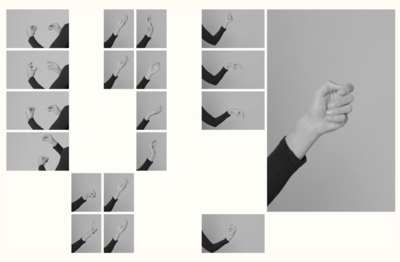Research

Coded Gestures, Sanne van den Elzen
Description
In form of a short research paper, Maughan explores the evolution and potential of hand gestures in human-computer interaction, particularly in the context of emerging spatial computing technologies. The paper reflects on the historical significance of hand representations, such as ancient cave paintings, and examines how our hands have co-evolved with tool use over millennia. It critiques the current design of hand gestures in technology, like Apple's double tap, as mere extensions of existing interactions, and advocates for reimagining hand-based interactions to fully harness the capabilities of spatial computing.
Reflection
Maughan lays out how gestures serve as both a bridge and a blueprint for future embodied technologies, shaping how we interact beyond screens and devices. As spatial computing evolves, gestures could inspire more fluid, intuitive interfaces that dissolve the boundaries between digital and physical spaces. Their design must embrace cultural diversity, ergonomic fluidity, and emotional expressivity to create meaningful, adaptive interactions. By moving beyond prescriptive, pre-defined gestures, future formats of embodied technology can foster a more symbiotic relationship between humans and machines—one where interaction feels as instinctive as movement itself.
References
https://philipmaughan.net/ [Philip Maughan], https://modemworks.com/ [Modem Works], https://www.sannevandenelzen.nl/ [Sanne van den Elzen]
Quote
"Annie Murphy Paul notes how gestures help us pin down vague thoughts, offering a “proprioceptive hook” that distributes cognitive load and assists memory. Gestures accompany everyday speech. They replace it when we lack a shared language, or when speech becomes
inaudible or dangerous."
Added on
18.03.25
to the softwear.directory

